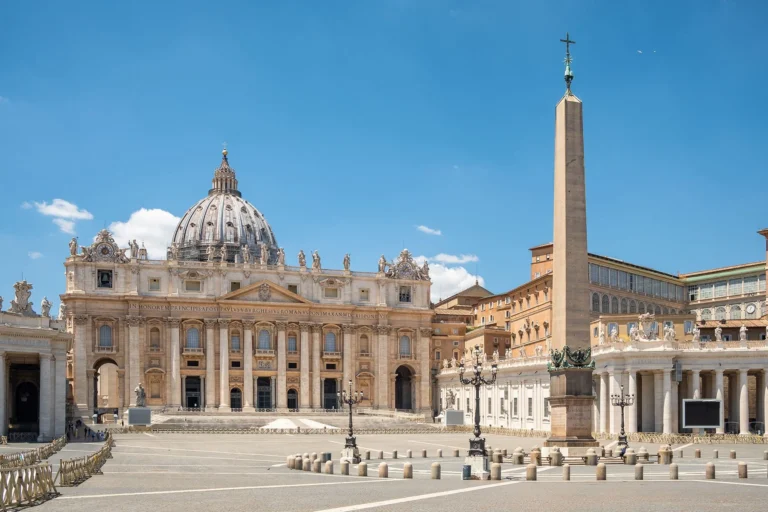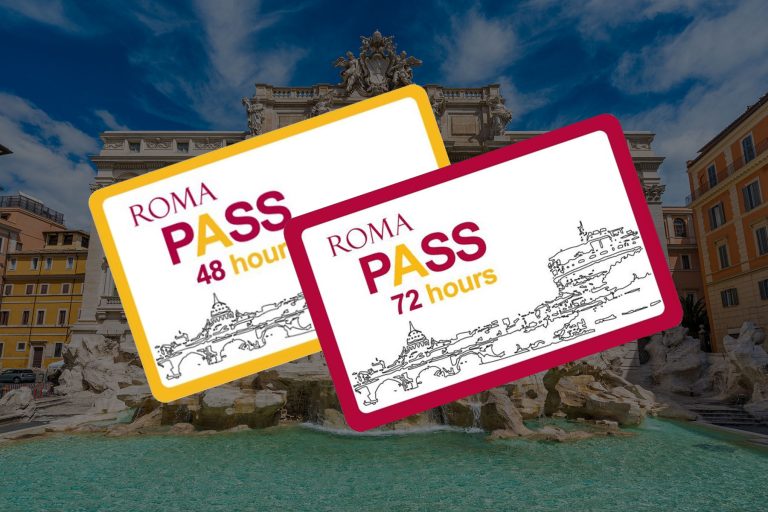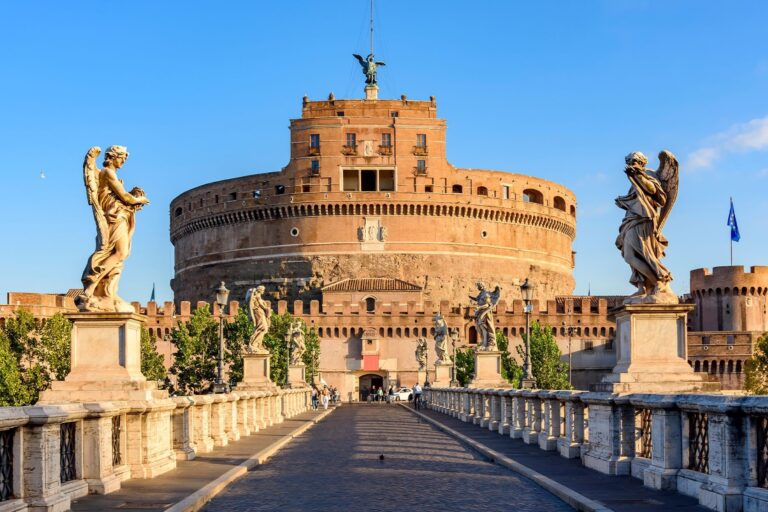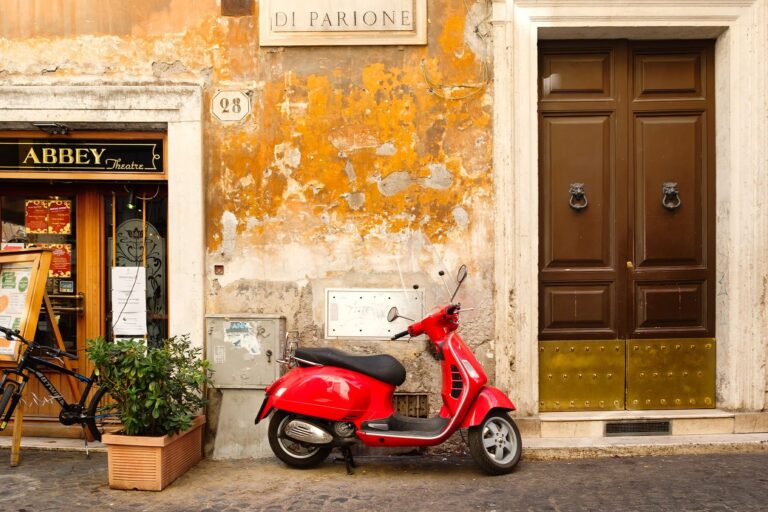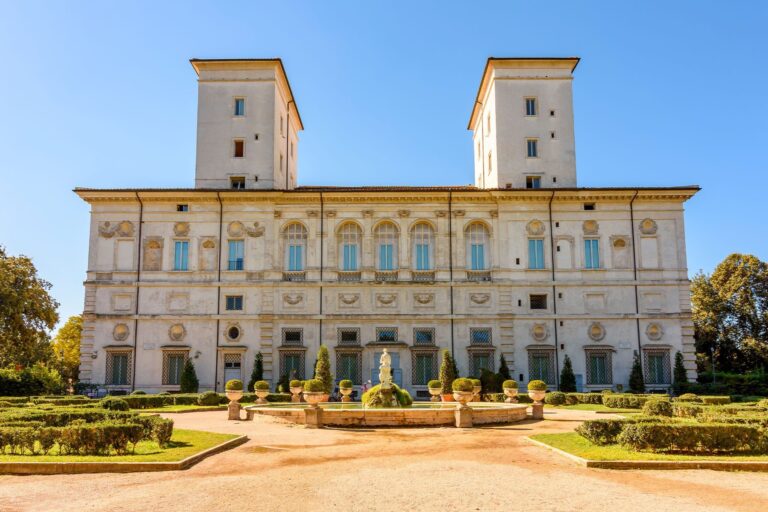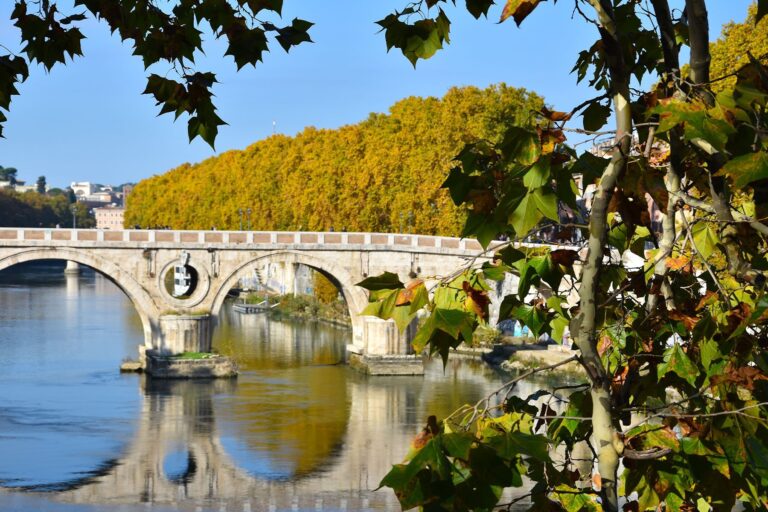One of the highlights of Rome is undoubtedly the Colosseum, in the archaeological heart of the city. A visit to Rome is not complete without seeing this remarkable amphitheatre!
The Colosseum in Rome was the most impressive building of the Roman Empire, and today, as part of the seven new wonders of the world, the structure still holds tremendous appeal for the millions of tourists who visit the Italian capital each year.
Unfortunately, much of the Colosseum is not as it once was. However, the building is still incredibly impressive to behold. This is mainly due to the immense size of the Colosseum. The structure has a circumference of 527 meters and a facade that reaches 48.5 meters in height. The building’s surface area measures 188 by 156 meters, and in total, three rows of 80 arches can be seen on the exterior of the amphitheatre. In the past, there were 76 entrances, but today, only one entrance and one exit are in use.
History of the Colosseum
The Colosseum was commissioned by Emperor Vespasian, who gave the green light for its construction in 70 AD. Thanks to the spoils from the plundering of Jerusalem in 70 AD, Rome was able to finance the construction of the Colosseum. Construction was completed in 80 AD, and with a grand opening lasting an impressive 100 days, the inauguration of the Colosseum was celebrated.
The site where the Colosseum now stands used to be occupied by houses for Rome’s poor population. However, these houses were completely destroyed by a fire, leaving space for Emperor Nero’s residence. He built his Domus Aurea, also known as the Golden House, on the site, encompassing a total of nearly 80 hectares with magnificent gardens.
Even before the completion of the palace and gardens, Emperor Nero passed away. His successors did reside in the complex, but this changed when Emperor Vespasian came to power. Unlike many of his predecessors, including Nero, Vespasian listened to the people, knowing that the population of Rome harbored immense disdain for Emperor Nero. Therefore, Vespasian decided to demolish the complex, and in its place, the Colosseum was built—an amphitheater for the people of Rome.

The Colosseum had a capacity for as many as 70,000 spectators who could occupy seating and standing areas. For over a hundred years, millions of people witnessed the numerous battles in the amphitheater, including gladiators fighting against wild animals such as lions, tigers, and elephants, or against other gladiators. Often, these battles were to the death, but in some cases, the loser’s fate was decided by the emperor. If his thumb went up, the gladiator lived; if it went down, it meant death.
In total, between 300,000 and 500,000 people and animals were killed in the Colosseum. With the rise of Christianity, there was increasing resistance to the games in the Colosseum. When Christianity was elevated to state religion, the games were eventually banned by Emperor Honorius. This Christian emperor prohibited the games in 404 when a monk was lynched by the audience. Afterward, the Colosseum was still used for other performances until 523 AD.
After its closure, the Colosseum served various other functions, including a cemetery, a castle, and workshops. However, as the building no longer held a significant role in the city, it fell into disrepair. Additionally, many stones from the Colosseum were used to construct buildings elsewhere in the city, resulting in large parts of the structure missing, with only a fraction of the original Colosseum remaining visible. Moreover, the bronze components that held the masonry together were chiseled out of the walls to be used elsewhere, which is evident today from the many holes in the walls.
Visiting the Colosseum
When visiting the Colosseum, be prepared for some delay at the entrance as everyone must pass through a security check, where your luggage will be inspected, and you’ll need to walk through a scanner. Large suitcases, trolleys, and big backpacks are not allowed inside.
Additionally, a maximum of 3000 people are allowed inside the Colosseum at once, so it’s possible that fewer people will be admitted at the entrance, and you may have to wait a bit before entering, even if you’re at the front of the line.

Sections Reopen After Extensive Restoration
For a long time, large sections of the Colosseum were not accessible to the public, including the underground chambers. However, this changed after the lengthy restoration was completed, and visitors can now explore the gladiators’ chambers.
In these underground chambers, gladiators prepared for battles in the Colosseum’s arena two thousand years ago, engaging in life-or-death fights with animals and other gladiators. The underground chambers also housed the enclosures where wild animals were kept before the fights.
In recent years, a staggering 25 million euro has been invested to restore the Colosseum to its former glory. During various extensive renovations, the exterior stones of the Colosseum have regained their original colors, several walls have been reinforced, and certain walls have been rebuilt with the original stones.
Thanks to these thorough renovations, the fourth and fifth floors of the Colosseum have been reopened to the public since 2017 after being closed to visitors for over 40 years. The lower floors of the Colosseum were reserved exclusively for the wealthy and influential individuals of Rome, while the upper floors were for the common people who couldn’t afford the luxury seats on the lower levels.

Tickets for the Colosseum
Are you planning a trip to Rome and want to visit the Colosseum? It’s recommended to reserve your Colosseum tickets online in advance. As one of the most popular attractions in all of Rome, the queue at the ticket office can be extremely long. Waiting times of two hours, especially during holiday periods, are not uncommon.
By reserving special skip-the-line tickets online in advance, you can bypass the long queue and walk straight in. This way, you’ll have more time to explore the rest of Rome! You can book skip-the-line tickets for the Colosseum online via the websites of Tiqets, GetYourGuide, or Tiqets.
With a ticket for the Colosseum, you also gain access to the Roman Forum and the Palatine Hill, which are within walking distance of the Colosseum.
Click here to book your Colosseum tickets
Colosseum Priority Entrance / Skip-the-Line Tickets
Skip the long queue at the ticket office and entrance of the Colosseum with these special priority tickets. In addition to access to the Colosseum, these tickets also grant entry to the Roman Forum & Palatine Hill.
The cost for skip-the-line tickets for the Colosseum is 30 euros per person. You can easily book these special priority tickets via the Tiqets website, where you can securely and quickly pay with iDeal, credit card, or PayPal.

Colosseum Priority entrance tickets inclusief arena toegang
Do you want to skip the line at the Colosseum and visit the arena inside? There’s a special ticket that not only grants access to the 1st and 2nd floors of the Colosseum like any regular ticket but also provides exclusive access to the Arena floor in the middle of the Colosseum. With this ticket, you also gain access to the Roman Forum & Palatine Hill. The cost for the Colosseum ticket including arena access is 84 euros per person and can be reserved online through the Tiqets website.
Colosseum Tickets including Guided Tour
Visit the Colosseum, skip the line, and learn all about this remarkable structure during a guided tour of the Colosseum with an English-speaking guide. You’ll visit the 1st and 2nd floors, accessible to regular visitors, but with this guided tour ticket, you also have the opportunity to admire the underground section of the Colosseum. The cost for the Colosseum ticket including a guided tour is 119 euros per person. You can easily book tickets by this link.
Rome City Pass
If you plan to visit both the Colosseum and St. Peter’s Basilica, you can purchase the affordable Rome City Pass, granting you free access to both attractions in Rome and a 20% discount on numerous other attractions and museums in Rome. Additionally, you’ll receive an airport transfer and can use the hop-on-hop-off bus in Rome.

Accessibility and Opening Hours
The easiest way to reach the Colosseum is by metro. If you take metro line B and get off at the Colosseo stop, you’ll be just steps away from the Colosseum. Additionally, several bus lines also stop right in front of the Colosseum. If you have a ticket for Rome’s hop-on-hop-off bus, all the bus stops for these routes in Rome are within walking distance of the Colosseum.
The Colosseum is open year-round, except for Christmas Day (December 25th) and New Year’s Day (January 1st). The opening hours of the Colosseum vary depending on the season, and we have listed all the opening hours for you below:
Last Sunday in October to February 15th: 08:30 AM to 04:30 PM
– February 16th to March 15th: 08:30 AM to 05:00 PM
– March 16th to the last Sunday in March: 08:30 AM to 05:30 PM
– Last Sunday in March to August 31st: 08:30 AM to 07:15 PM
– September 1st to September 30th: 08:30 AM to 07:00 PM
– October 1st to the last Saturday in October: 08:30 AM to 06:30 PM
